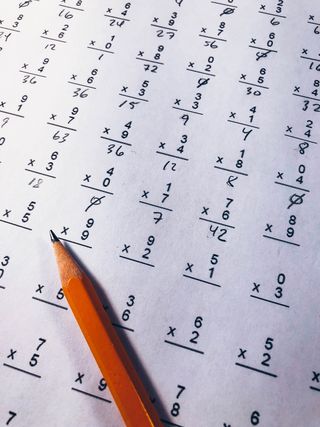Motivation
Should U.S. Students Do More Math Practice and Drilling?
Brief, fast-paced practice with corrective yet supportive feedback should help.
Posted August 18, 2018

Should U.S. students be doing more math practice and drilling in their classrooms? That’s the suggestion from last week’s most emailed New York Times op-ed. The op-ed’s author argued that more practice and drilling could help narrow math achievement gaps. These gaps occur in the U.S. by the primary grades.
Yet others worry that more math practice and drilling will stifle creativity. They argue that routine practice and drill interferes with understanding underlying mathematical concepts. Instead, young students should acquire a good understanding of mathematics concepts before being given practice opportunities to become procedurally fluent. The suggested way to do so is for teachers to use instructional approaches in which mathematical concepts and strategies are explored and constructed through student-centered, discovery activities. Whether U.S. students learn math better through traditional teacher-directed activities emphasizing practice or, instead, through student-centered activities emphasizing reasoning and discovery has been debated for decades.
Yet increasingly there are good reasons to believe that more math practice and drilling would help U.S. students do better in math, particularly those who are already struggling in elementary school.
Why might this be so? Routine practice and drilling following explicit teacher-directed instruction should help students become quick and accurate in solving basic operations, thereby becoming procedurally fluent. Becoming procedurally fluent in turn should help students by freeing up their cognitive capacities to solve more complex tasks. For example, students who practice to quickly and accurately recognize the meaning of the equal sign do better at solving word problems. Practice may be particularly important for elementary school students who are struggling in math. This is because these students often have underlying difficulties in attention, working memory, and language that interfere with their learning during less structured student-centered activities.
The idea that procedural fluency acquired through routine practice and drilling somehow limits conceptual understanding of math is a “myth” according to a recent research review. Instead, routine practice and drilling—especially when coupled with corrective feedback and ambitious but attainable goal-setting—should help students learn better. Such distributed practice is “necessary if not sufficient for acquiring expertise.” Procedural fluency and conceptual understanding influence each other bidirectionally over time. And giving students opportunities to practice is viewed as a key element of effective math instruction.
Students provided with explicit instruction by teachers who provide frequent practice opportunities show achievement gains that are similar in size to the gains needed to narrow achievement gaps. And recent work suggests that routine practice and drilling in math might be an especially important instructional practice for elementary school teachers to use.
For example, my colleagues and I analyzed a sample of over 13,000 U.S. students to examine what types of instructional practices predicted greater math achievement by the end of first grade. The achievement measures were independently administered while first grade teachers self-reported how frequently they used various types of instructional approaches.
We were able to control for many factors that might otherwise explain any observed relations between the types of instructional approaches used by first grade teachers and the math achievement of their students. These factors included the math and reading achievement of the students at the end of kindergarten as well as characteristics of their families, classrooms, and schools.
What did we find? Across four types of instructional approaches, we found that only teacher-directed instruction consistently predicted greater math achievement in first grade. Teacher-directed instruction predicted greater achievement by students who had struggled in math during kindergarten and by students who had not. Less traditional types of instruction, like using movement activities or music to teach math, did not predict greater achievement.
Yet first grade teachers were more likely to use these ineffective instructional approaches when teaching classrooms with greater shares of struggling students. Student-centered instruction predicted greater achievement but, importantly, only by students who had not previously struggled in mathematics. And the most effective teacher-directed instructional practice that we examined? Routine practice and drill.
So, should U.S. students do more math practice and drilling in their classrooms? At least to an extent, and particularly for elementary school students who are already struggling. Doing so in ways that are brief, fast-paced, and that provide corrective yet supportive feedback should result in greater procedural fluency and, over time, the conceptual understanding and higher-order thinking skills that we want all students to have.




